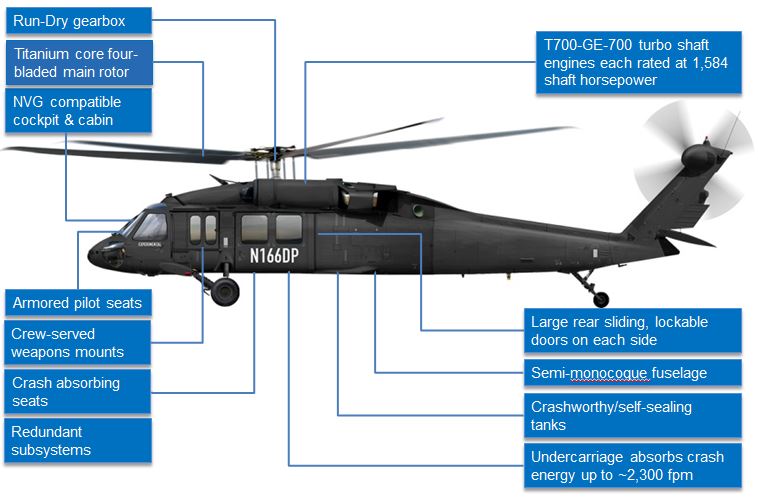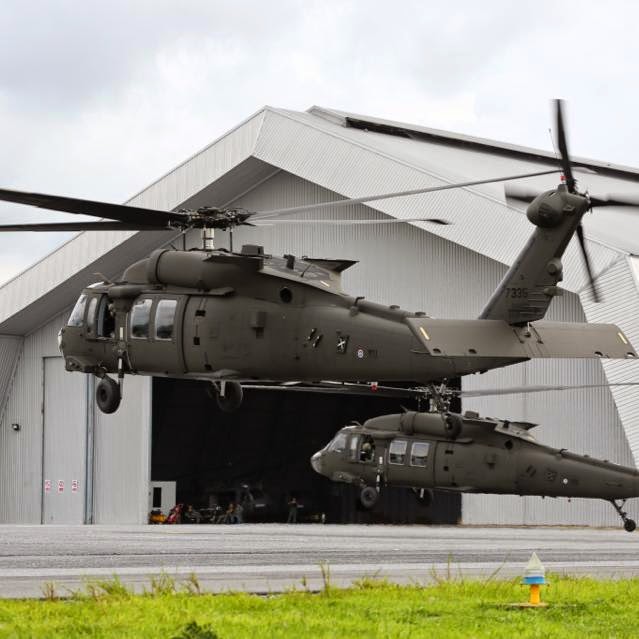Comprehending the Mechanics and Engineering Behind Uh 60 Helicopters
The UH-60 helicopter, frequently recognized as the Black Hawk, stands as a peak of contemporary rotorcraft technology, personifying a blend of durable engineering and elaborate auto mechanics. As we peel off back the layers of the UH-60's style, a globe of detailed systems and careful engineering comes to light.
Background of UH-60 Helicopters
The history of UH-60 helicopters traces back to the late 1970s when the USA Army sought a sophisticated and versatile utility helicopter to change its aging fleet. In action to this demand, the Sikorsky Aircraft Corporation developed the UH-60 Black Hawk helicopter. Introduced in 1979, the UH-60 promptly became a staple in military procedures as a result of its outstanding capabilities.
The UH-60 was developed to master a variety of goals, including troop transportation, clinical evacuation, electronic war, and special operations. Its ability to adapt to different duties made it a useful possession to the united state Military and other army forces all over the world
Over the years, the UH-60 system has actually gone through several upgrades and variants to boost its efficiency and equal progressing objective requirements. These helicopters have actually seen extensive service in problems such as the Gulf War, Afghanistan, and Iraq, showcasing their integrity and adaptability in varied operational environments. The UH-60's rich history is a testament to its enduring tradition as a top utility helicopter.

Engine and Power Solutions
Utilizing sophisticated propulsion modern technology, UH-60 helicopters are outfitted with innovative engine and power systems to guarantee optimal performance and integrity in a series of operational scenarios. The UH-60, commonly called the Black Hawk, is powered by two General Electric T700-GE-701D engines, each with the ability of supplying up to 1,940 shaft horse power. These turboshaft engines supply the necessary drive for the helicopter to perform its missions efficiently, consisting of army transportation, medical evacuation, and battle support.

Rotor System and The Rules Of Aerodynamics
Just how do the blades system and aerodynamics of UH-60 helicopters contribute to their functional performance and trip abilities? The rotor system of the UH-60 helicopter plays an essential role in supplying lift and propulsion.
Aerodynamics also play an essential role in the efficiency of UH-60 helicopters. The streamlined fuselage and blades blade design minimize drag, enabling the helicopter to attain greater rates and much better fuel performance. The aerodynamic style of the UH-60 also adds to its capability to operate in varied environmental conditions, consisting of high altitudes and warm temperatures.
Avionics and Flight Control Systems

In its elaborate sychronisation with the blades system and the rules of aerodynamics of UH-60 helicopters, the avionics and flight control systems create a crucial network of technologies shaping the airplane's functional capabilities. Avionics encompass the electronic systems made use of for interaction, navigating, and monitoring numerous aircraft features. In the UH-60, these systems include digital screens, interaction radios, general practitioner navigating, weather radar, and autopilot systems. These avionics systems offer important information to the pilots, enhancing situational understanding and guaranteeing efficient and safe operation of the helicopter.
The trip control systems of the UH-60 are accountable for translating the pilot's inputs right into the ideal modifications to the rotor system, making certain steady flight and maneuverability. These systems contain hydraulic actuators, servos, and computers that interact to manage the major and tail rotors, in addition to various other flight control surfaces. By precisely managing the helicopter's trip dynamics, these systems allow pilots to perform a large range of missions, from transport and search-and-rescue to combat procedures, with precision and self-confidence.
Duty and Applications in Aeronautics
Avionics systems in UH-60 helicopters incorporate an array of digital systems that aid in navigating, you could check here communication, monitoring, and managing numerous aircraft features. These systems include digital displays, autopilot systems, interaction radios, General practitioner navigating tools, and weather radar. Furthermore, these systems incorporate safety and security features such as auto-pilot modes, surface recognition warning systems, and security enhancement systems to boost the overall safety and operational capabilities of the UH-60 helicopters in different missions, consisting of army transport, medical emptying, search and rescue, and aerial firefighting.
Verdict
In verdict, the UH-60 helicopter is a versatile aircraft with an abundant history and progressed design. Its engine and power systems, blades system, the rules of aerodynamics, avionics, and flight control systems all work together to make it a efficient and dependable maker.
In its elaborate coordination with the blades system and the rules of aerodynamics of UH-60 helicopters, the avionics and flight control systems create an essential network of technologies forming the airplane's functional abilities.The trip control systems of the UH-60 are liable for translating the pilot's inputs right into the appropriate changes to the rotor system, making certain stable trip and ability to move. Avionics systems in UH-60 helicopters encompass a range of electronic systems that help in navigation, communication, surveillance, and controlling various airplane features. Furthermore, these systems integrate safety and security attributes such as autopilot settings, terrain understanding advising systems, and stability enhancement systems helpful site to improve the total safety Discover More Here and security and functional capabilities of the UH-60 helicopters in various goals, including army transportation, medical discharge, search and rescue, and airborne firefighting.
Its engine and power systems, blades system, the rules of aerodynamics, avionics, and trip control systems all work with each other to make it a dependable and effective maker.